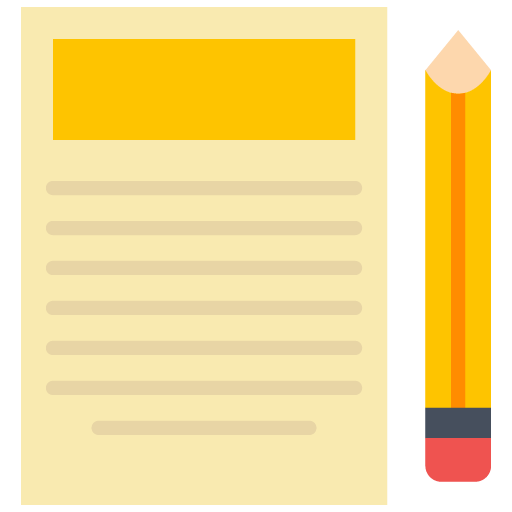From Blank Page to Killer Copy: Beating Writer’s Block Like a Pro
Every copywriter, whether beginner or seasoned, has stared at a blinking cursor on a blank page with growing frustration. Writer’s block doesn’t discriminate. It shows up when you least expect it—right before a deadline, during a pitch, or when you’re trying to impress a new client. The good news? Writer’s block isn’t a dead end. It’s a detour. With the right mindset, techniques, and structure, you can turn that blank page into high-converting, compelling copy that gets results. This blog explores how professionals deal with writer’s block and offers actionable ways to overcome it.
Understanding What Writer’s Block Really Is
Writer’s block isn’t laziness or lack of talent. It’s usually a sign of creative fatigue, pressure, perfectionism, or unclear direction. Sometimes it stems from trying to write and edit at the same time. Other times, it’s because you haven’t fully connected with the message or the audience. Recognizing the root cause is the first step in dissolving the block.
Professionals understand that writer’s block is not a personal failure—it’s a signal. It means something in your process needs adjusting. When you shift your thinking from “I’m stuck” to “I need to realign,” you begin to take control of the page again.
Start With Structure, Not Sentences
One of the biggest mistakes when facing writer’s block is trying to write the perfect headline or opening paragraph first. That’s like trying to build a house by decorating it before laying the foundation. Pros know that copywriting becomes easier when you outline the structure first.
Ask yourself:
- What is the purpose of this piece?
- Who am I writing to?
- What do they need to feel, know, or do?
- What’s the call to action?
Create a loose outline: intro, key points, proof, offer, close. Just having a roadmap will ease the pressure and give your brain somewhere to go.
Embrace the Ugly First Draft
Perfection is the enemy of progress. Professional copywriters don’t wait for inspiration to write flawless sentences. They write flawed ones fast. They allow the first draft to be messy, scattered, and cliché. Why? Because rewriting bad copy is easier than writing perfect copy on the first try.
Set a timer for 15 or 20 minutes and force yourself to write anything—even if it’s off-topic. Momentum matters. Often, a good idea reveals itself mid-draft, but you’ll only find it if you’re willing to write through the bad stuff first.
Use Voice Notes or Talk It Out
If typing feels stuck, try speaking. Talk through your ideas out loud and record yourself. Explain the benefits of the product as if you were pitching it to a friend. This technique bypasses your inner critic and taps into your natural tone of voice.
Many copywriters find that their best headlines come from casual speech rather than overthinking. Speaking also reconnects you with the audience and reminds you that you’re writing to real people—not just filling space on a screen.
Steal Like a Copywriter
Great copywriters know how to get inspired without plagiarizing. They collect headlines, emails, landing pages, and social ads that grab their attention. When stuck, they flip through these “swipe files” to jumpstart ideas. It’s not about copying—it’s about seeing what’s worked before and using it as a launching pad.
If you’re writing a sales page, read three others. Notice the flow. Notice what emotions they hit. Then take that structure and adapt it to your voice and your audience. Creativity often comes from mixing old ideas in new ways.
Set Tiny Goals and Deadlines
A big project can feel overwhelming when you see the whole thing at once. Break it into micro-goals. Instead of “Write a landing page,” your goal becomes “Write three subheads in the next ten minutes.” Progress breeds confidence. Confidence clears the block.
Professional copywriters also use fake deadlines to force momentum. Set a countdown timer and pretend your piece is due at the end. This pressure lights a fire under creativity and helps bypass overthinking.
Change Your Scenery or Stimulus
Sometimes, your brain just needs a new context. Take a walk. Switch to pen and paper. Write in a café instead of your office. Listen to music that energizes you or relaxes you. Even reading unrelated content—fiction, poetry, news—can activate new thought patterns.
A blocked brain is often just a bored one. Feed it novelty and movement, and suddenly ideas start to reappear.
Know When to Walk Away
One of the most counterintuitive tricks to beating writer’s block is knowing when to stop trying. If nothing’s flowing, forcing more might lead to frustration rather than productivity. Take a break. Step away completely. The subconscious continues working even while you rest.
Many copywriters find that their best ideas come while doing something mundane—showering, driving, cooking—because the pressure is gone. Create space for inspiration to come to you.
Celebrate Progress, Not Perfection
Writing killer copy isn’t about being brilliant every sentence. It’s about being consistent, resourceful, and resilient. Writer’s block isn’t the enemy—it’s part of the process. Every professional faces it. The difference is, they don’t let it stop them.
Whether it’s a cold email, product description, or sales letter, what matters most is getting words down. Once you have words, you have something to work with. And with practice, those words become sharper, smarter, and more persuasive.

